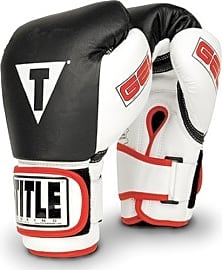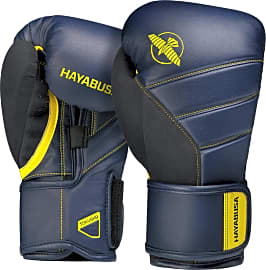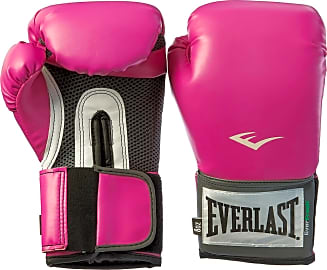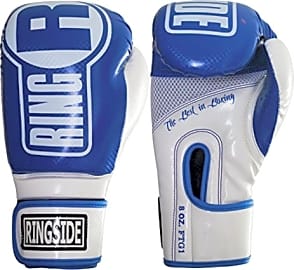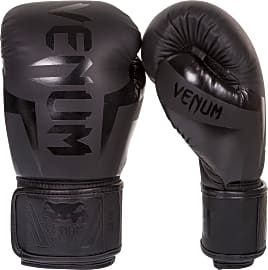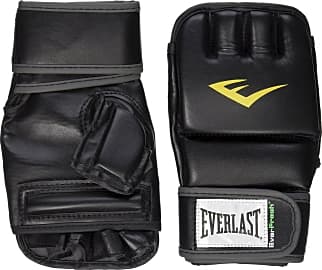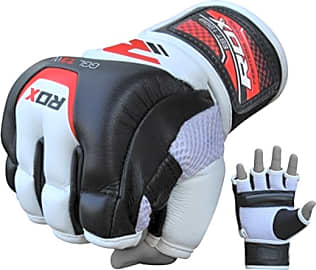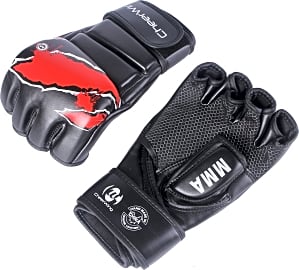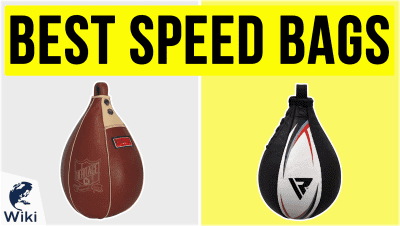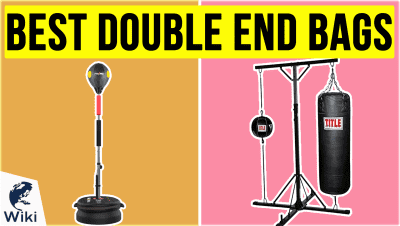The 10 Best Bag Gloves

This wiki has been updated 34 times since it was first published in October of 2016. If you are a boxer, martial artist, or MMA fighter who practices striking on a heavy bag, or you use a fitness routine that involves punching your way to health, then you'll want to make sure your hands, wrists, and knuckles are properly protected. Our selection of bag gloves includes options for dedicated professional use and more versatile choices suitable for a variety of workouts. When users buy our independently chosen editorial recommendations, we may earn commissions to help fund the Wiki.
Editor's Notes
April 08, 2021:
We found these rankings to be in pretty good shape, with the vast majority of our choices from last year still being available and presenting as smart picks for the category. One exception was the Harbinger Wrist Wrap 32232, which we felt was overpriced and seemed to be suffering from some availability issues, paving the way for its elimination.
I even found the placement of items on this list to be in good order, agreeing with the assertion made in the March 25, 2020 editor’s note for this page that suggested that heavy bag gloves belong on top of the pile. MMA-style, open-finger gloves may be more affordable, comfortable and convenient, but they also present less of a challenge and leave you more vulnerable to injury, which is enough to qualify them as inferior — in my mind, anyway.
However, in the spirit of compromise, we decided to give our new addition – the purpose-designed Fairtex TGT7 bag gloves – a spot right at the top of our list. I hesitated to make this decision at first, wondering whether blind brand loyalty was inflating my opinion of this pair, as I’ve never had anything short of an excellent experience with Fairtex gear, but ultimately decided that the design deserved the spot. Unlike typical, MMA-style gloves that leave your fingers exposed, the TGT7 offer full protection for your fingers, but leave your thumb free. If you’re not careful, this could leave your thumb exposed to injury, but if you’re precise in your bag work, you should be fine, and the open thumb will make this pair cooler, more comfortable and easier to take on and off than standard boxing gloves, making them an all around great pair for bag work.
Now that you’ve got your gloves all sorted out, all you need is some bags. We’ve got lists of speed bags, double-end bags and heavy bags for you to browse through.
March 25, 2020:
Removed the Sanabul Essential because of concerns that the material may crack too quickly. Added the Cleto Reyes RETG1.
There are many excellent MMA-style bag gloves such as the Everlast Train Advanced that allow you to quickly transition from bag work to grappling. But, as you may have noticed, I have favored the full-style gloves because I think that they have a decisive edge when dealing specifically with heavy bag work.
Most obviously, full gloves will almost always have much more padding than MMA gloves. This is essential for bag work because they give you the best chance of avoiding injury while throwing power shots at a high volume. The padding on MMA gloves does not extend down to the second knuckles which can become an issue on rough canvas bags. Additionally, they are often heavier than MMA gloves at 14 to 18 ounces. This allows you to develop power, speed, and endurance at a high rate (particularly when you transition to lighter gloves for sparring). Lastly, full gloves extend further into your forearm than MMA gloves so this helps you keep your arm, wrist, and hand bones aligned properly, again, to avoid injury.
The Cleto Reyes RETG1 are my bag gloves of choice because of their durability, protection, and comfort. While they are on the pricier end, what you'll find is that lesser gloves will often tear within a few months and you'll need to buy another pair.
Special Honors
Versace Barocco Unless they've got as much disposable cash as Floyd Mayweather Jr., it's hard to imagine how many pugilists will be frivolous enough to train in a pair this pricey. That being said, they do have an interesting design, and if you like them, we won't judge you for just wearing them around the house with a robe on. versace.com
Splendore Boxing Gloves If you believe that training is as much about looking good as it is about feeling good, then this brand might be for you. They offer some unusually loud designs, including rose gold and snake skin aesthetics that are sure to stand out at the gym. Notably, it looks like their offerings are much more affordable on the company's official website, but it's unclear whether they'll ship outside of Mexico. wolfandbadger.com
The Importance Of Wearing Gloves While Hitting The Bag
Gloves soften that impact, so that there's less force being applied to your tender joints.
Boxing is a dangerous sport. You probably knew that already — all the people hitting each other in the face was a dead giveaway — but there are lots of ways to hurt yourself at the gym besides getting in the ring.
One of the easiest ways to injure yourself is while hitting the heavy bag. Many boxers sprain their wrists while doing bag work, as the hard impact on an unforgiving surface can stretch the ligaments and tendons further than they're supposed to be stretched.
Wearing bag gloves — and hand wraps — can offer your wrists the support they need. The gloves can keep everything in alignment, so that nothing gets over-extended.
You'll also skin up your knuckles if you hit the bag barehanded. While this isn't entirely a bad thing — it can help toughen up the skin, which is important for fighters — it could slow down your training, especially if you have to take a few days off to let the tissue heal.
Smacking the bag can send shock waves up your entire arm. It's not uncommon to see elbow, shoulder, and even neck injuries from extended bag work, and this is due to the stress from the repeated impact. Gloves soften that impact, so that there's less force being applied to your tender joints.
Just wearing gloves isn't enough to prevent injury, of course. You also need to develop proper technique (more on that in a minute), as well as allow your body to recuperate after every session. Don't be hardheaded about injury recovery, either — pamper your body if you expect it to be operating at maximum capacity come fight night.
Once you get the proper gear and the proper training, you'll be ready to go 12 rounds with the champ in no time (or take a dive in the third — we have no idea what kind of shadowy backroom deals you might've made with your promoter).
Proper Bag Technique
Hitting a heavy bag looks like the easiest thing to do in a boxing gym. It doesn't wobble like the speed bag, it doesn't require as much coordination as jumping rope, and you can't get knocked out doing it, like you could if you're sparring.
However, there's more to it than you might think.
If you're worried about injuries, the first thing to do is protect your hands (we've already discussed this), and be sure to use proper technique with every punch. Also, be sure that you're actually hitting the bag instead of pushing it. It shouldn't move around too much, and there should be a loud and definite pop with every smack.
Have a plan behind every punch, and try to put together a few combos.
Don't overextend yourself or lose your balance, either. Your feet should stay underneath you at all times, and don't lean on the bag when you're tired.
Pay attention and be aware of everything you're doing, and do it purposefully. Many fighters succumb to something called "lazy eyes" when they hit the bag; this means that you're just mindlessly swinging, without even really seeing what you're trying to hit. This isn't conducive to becoming a better fighter, needless to say.
Just because the bag won't hit back doesn't mean you can neglect your defense. Keep your feet moving and your hands up at all times. Throw your punch, and then get out of the way. Make sure your head keeps bobbing and weaving as well, because if you get used to keeping it stationary, other fighters will quickly get used to hitting it as hard as they can.
You're going to fight like you train, so don't just throw haymakers at the bag. Have a plan behind every punch, and try to put together a few combos. Watch your breathing, too — many fights are won by the pugilist who has more wind in his lungs, after all.
Once you learn the right way to attack the bag, don't be surprised if it becomes your favorite station in your workout cycle. Well, after the water fountain, of course.
Secrets To A Great Boxing Workout
If you've got a fight scheduled for the end of the month at Madison Square Garden, then you've already got an experienced trainer who knows the best way to put you through your paces. You have our permission to skip this section.
Everyone else should pay attention — we're going to share the secrets of the perfect boxing workout.
If you've ever climbed in the ring before, then you already know that boxing can tucker you faster than just about anything else. So, you're going to need to work on your cardio if you want to make it to the final bell.
Everyone else should pay attention — we're going to share the secrets of the perfect boxing workout.
Start off with three minutes of shadow boxing. Stand in front of a mirror and act like you're punching yourself in the face (we've all thought about it). Throw combinations, work on your defense — fight an entire round, basically. Just don't let yourself stop until that timer goes off.
Now, work on your bobbing and weaving. Either stretch some rope across the room, or just pretend like you did, and slip underneath it as you work down the line. Bonus points if you're holding dumbbells while you do it.
After that, move on to the heavy bag. Remembering everything we discussed above, unload on it. Throw every single punch in your arsenal. Keep moving. Never put your hands down.
Follow it up with a round on the speed bag. This is a good chance to catch your breath, but don't neglect your technique while you do it. Build that hand-eye coordination while your lungs play catch-up.
Add in some calisthenics at this point. Jumping jacks, burpees, squats, and push-ups should all make an appearance. If you're trying to build strength, go to failure. If you just want to increase your endurance, time yourself instead.
That's it — are you tired yet? You are? Good.
Now do it all four more times.



